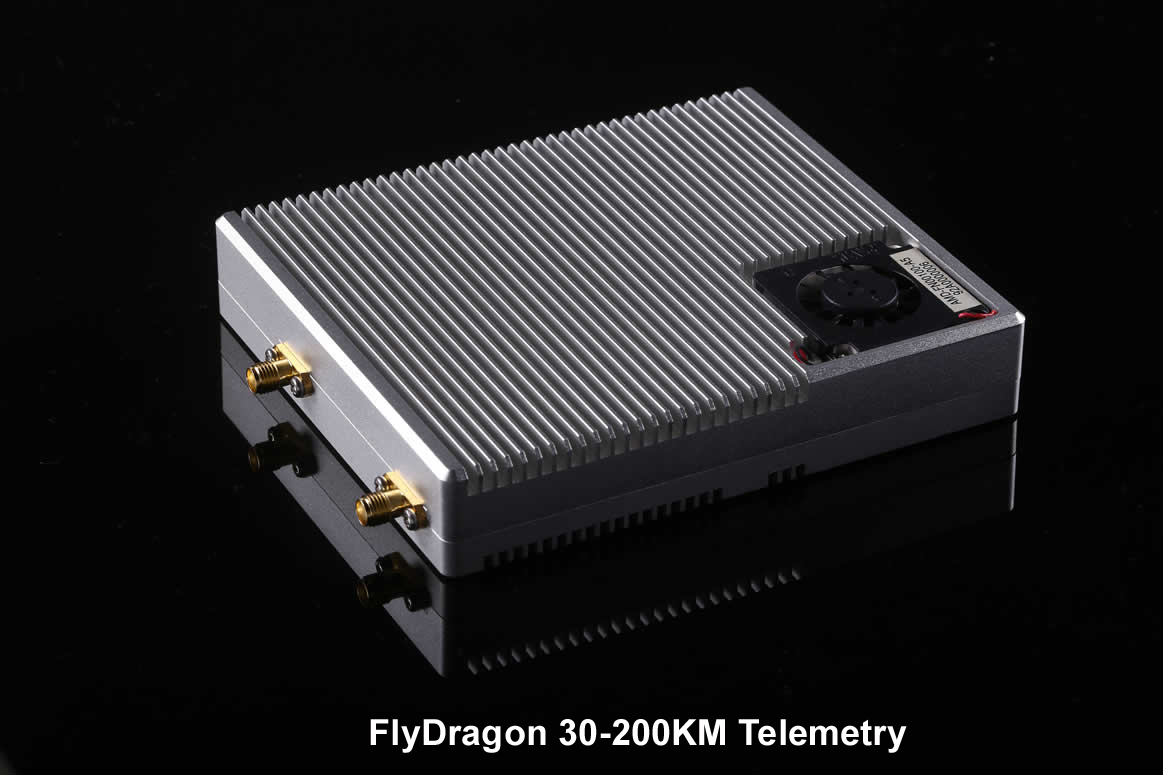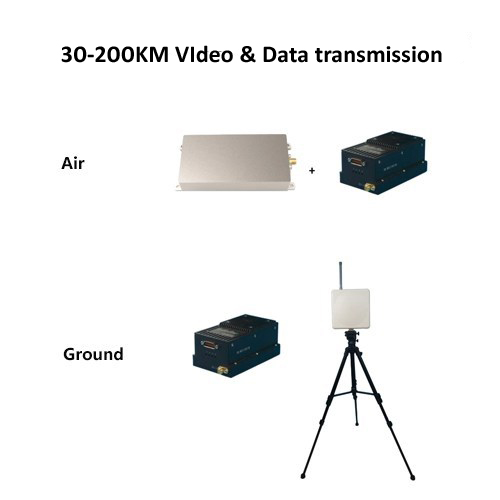How to realize long-distance image transmission by drones

What kind of technology is needed for drones to do ultra-long-distance image transmission? How to balance the distance and power consumption of UAV image transmission on UAV? What kind of difficulty is there in technical realization? FlyDragon will let you know.
Wireless transmission path and characteristics
Transmission path
There are many options for UAV image transmission to achieve ultra-long distances, which can be wired or wireless. In general, wired transmission must be farther, and transmission of tens of thousands of kilometers is possible. Take voice transmission as an example. Face-to-face conversations are transmitted by sound waves. Although the transmission distance of sound waves is very short, it is possible without the use of high-tech means. For images, modern communication means, such as optical fibers, must be used.
Frequency of electromagnetic waves
When it comes to modern communication methods, it is necessary to talk about the frequency of electromagnetic waves. Generally speaking, the lower the frequency of electromagnetic waves, the farther they travel. For example, the transmission of confidential communication telephones required for military activities belongs to the ultra-short wave frequency, which is relatively far away, and terrestrial communications generally use this frequency (interphone, etc.). Some communication methods that require relay transmission (via relay towers, etc.) use shortwave. Shortwave has a lower frequency than ultrashortwave and can travel farther. It is possible for hundreds of kilometers to thousands of kilometers, such as VOA radio stations. The shortwave frequency is used. Long-distance transmission must be the narrower the data, the farther the transmission, the greater the transmission power, the higher the sensitivity, which involves the issue of power.
Power
If you want to transmit information over a long distance, the greater the power, the farther the transmission. TV towers like those erected on high places have a power of several kilowatts or even tens of thousands of watts. To give a simple example, for example, after a broadcast is launched through a tower, a large area can receive the broadcast. This power is definitely not small. If a TV worker is exposed to the transmitting device, it will be very harmful to the body.
In summary, the equipment of various operators is the same. They increase the power of base stations or towers in order to transmit farther.
Bandwidth
Generally speaking, the bandwidth of voice is about 3K, because 3K is enough for ordinary people to speak, and a few hundred K is enough if it can be compressed, so the transmission bandwidth of voice is very small. However, the bandwidth of UAVs now starts with M, which poses a much greater challenge to long-distance transmission. The transmission distance depends on the sensitivity. According to Shannon’s formula, if the bandwidth increases ten times, the sensitivity decreases ten times, so bandwidth is very precious for wireless transmission.
Features of image transmission
Compared with ordinary signal transmission, the characteristics of image transmission are quite distinct:
1. The characteristic of image transmission is that the amount of data is too large. Files such as TXT usually start at a few K, but the amount of image data is much larger. For example, it takes a few megabytes for an iPhone to take a photo at will, so the bandwidth required is very high.
2. The image transmission cannot be delayed for a while. Just like everyone watching a movie, it can't stand the lag. In addition, when we watch a movie, the high-definition image is very cool, and it can't stand the blur. In summary, the characteristics of UAV transmission are that the amount of data is large and the delay requirements are low. This is the most difficult part of wireless transmission to control.
UAV ultra-long-distance transmission requirements
UAV image transmission is characterized by high image quality requirements and low real-time image monitoring delay. In addition to these two points, there are some problems: Because the UAV is a portable device, its power cannot be very large, so the transmission Power consumption should be small, but small power consumption and long distance are contradictory. In addition, UAV transmission must have strong anti-interference ability, because UAVs often work in complex environments such as crowded people or electromagnetic interference, so that the transmission will inevitably be affected by the outside world, which is also a problem.
There are also corresponding standards for UAV transmission in the world, and these standards also have some restrictions on UAV transmission. To spread far, the first step is to pass the power consumption level. There are power consumption standards for drones in the world. For example, Europe has to pass CE, and the United States has to pass FCC. The drone standard involves wireless communication, which is EMC battery compatibility requirements, power consumption and transmission power cannot exceed how much, etc. . For example, the CE requirement of DJI Phantom 4 is 20, the FCC requirement is 23, and the latest product is CE requirement 23 and FCC requirement 26, which restrict the transmission of drones.
Flydragon Long Distance Telemetry For Drone

100 KM long range Video & Data and telemetry for UAV
Flydragon long-distance image, data transmission, and remote control integrated data link products provide highly reliable communication connections for industrial-grade unmanned systems. has strong anti-interference performance, stable signal, rich interface types, supply30-200KM link custom made.,
The Flydragon-SDI data link has a built-in industrial-grade high-performance H.264 image encoder, supports SDI interface video input, realizes three-in-one image transmission, data transmission, and remote control. The ground end outputs a video stream through a network interface and uses computer software to decode The decoding software has local storage and forwarding functions. The end-to-end image delay is at least 250ms.
Features
Working in L, S band
Broadband transmission, air rate 10Mbps
Communication link establishment/recovery time is less than 10ms
Reliable communication and strong anti-interference ability
Excellent electromagnetic compatibility, no interference to GPS, pod and gimbal
Transmission distances of 3, 5, 10, 20, 40 kilometers and more than 50 kilometers can be selected (under visual conditions)
With 1 1080P60 SDI HD image, 4 digital transmission, 2 remote control interface
1 independent PWM channel output on the airborne end, can be used for signal control such as drop and lighting
The ground side adopts software decoding, and the decoding software has local storage and forwarding functions
Optimized transmission of 1080P high-definition video stream with minimum end-to-end delay of 250ms
Can realize point-to-point, point-to-multipoint, relay networking applications
Cold start time 5 seconds.
typical application
When users choose SDI interface pods, they need to choose Flydragon-SDI data link radio. InfoFly-SDI has a built-in high-performance industrial-grade SDI interface encoder that outputs H.264 code stream.
Figure 2. Typical application of Flydragon-SDI data link
Airborne end: SDI interface connects to pod or PTZ camera; COM1 interface connects to flight control data transmission interface for data transmission between flight control and ground station; SBUS1 interface connects to flight control for manual remote control flight; SBUS2 interface Connect PTZ to control PTZ. If the gimbal supports data transmission port control, InfoFly-SDI has 4 data transmission interfaces, and it can also support the gimbal control through the data transmission port.
Ground end: LAN port connects to the computer, receives H.264 high-definition image code stream and performs software decoding. The decoding software has functions such as local storage and network forwarding. The COM1 port is used to connect the flight control ground station to complete the telemetry remote control data transmission; the COM2 port can be used to control the gimbal and pan/tilt; the PPM1 remote control interface is connected to the first remote control through the trainer line to control the flight; the PPM2 remote control interface is passed The trainer line is connected to a second remote control for controlling pods or other loads. If the PTZ on the airborne end is controlled by a digital transmission interface, the ground needs to connect the PTZ control box to the corresponding digital transmission interface.

